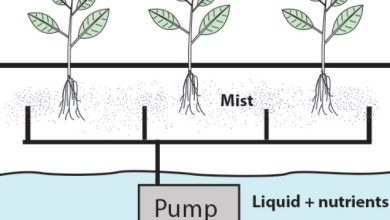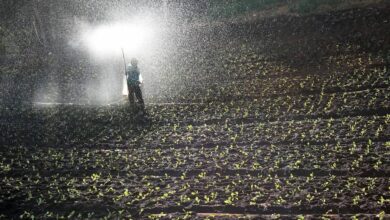Mediterranean Climate: [Characteristics, Flora, Fauna and Adaptability]
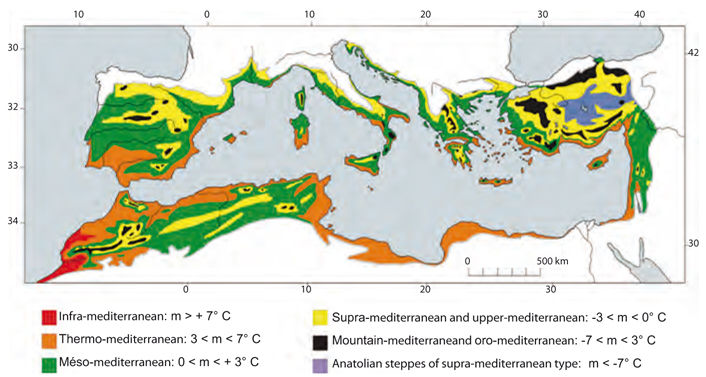
Important points about the Mediterranean climate:
- What is? The Mediterranean climate is the one that we can find in areas that are influenced by the atmospheric changes present on the coasts of the Mediterranean Sea.
- Where it is located? The specific location is in the countries that have their coasts on the Mediterranean Sea, specifically in the western area, countries such as Greece, Spain, Montenegro, Portugal, Slovenia, Italy, France, among others.
- What flora predominates? You can find herbs, bushes, fruit trees, olive trees, almond trees, ornamentals, grasses, among other species.
- What fauna predominates? We can find rabbits, squirrels, foxes, wolves, hawks, swallows, trout, wild boar, common European viper, partridges, among many others.
- How long is the day and night? In summer, the days are usually longer and the nights shorter. The correspondence in the variation can be up to 15 hours the longest cycle and 7 hours the shortest.
- Can humans live in this climate? The Mediterranean climate has conditions that are perfect for human life, since there are no significant temperature variations throughout the year.
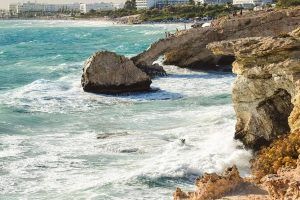 Did you know that the countries that are close to the Mediterranean Sea are considered to have a Mediterranean climate?
Did you know that the countries that are close to the Mediterranean Sea are considered to have a Mediterranean climate?
This situation responds to the fact that they present very specific conditions that originate from the union between the sea, the ocean and the coasts.
Many think that it is a fairly pleasant climate to live in and where it is possible to work the land almost all year round. If you want to know a little more about it, here we give you this interesting post that will talk about everything related to the Mediterranean climate.
What is the Mediterranean climate?
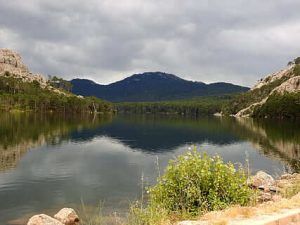 The Mediterranean climate is the one that we can find in areas that are influenced by the atmospheric changes present on the coasts of the Mediterranean Sea.
The Mediterranean climate is the one that we can find in areas that are influenced by the atmospheric changes present on the coasts of the Mediterranean Sea.
With its proximity to the ocean and the influence of other surrounding elements, such as the Sahara desert and land winds, it is a region with a more or less constant warm climate.
It is distributed, above all, on the European continent, although there are other areas of the world that have a very similar climate.
Where is the Mediterranean climate located geographically?
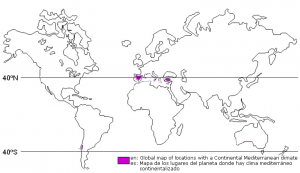 The specific location is in the countries that have their coasts on the Mediterranean Sea, specifically towards the western area.
The specific location is in the countries that have their coasts on the Mediterranean Sea, specifically towards the western area.
For a more precise geographical orientation, those that are in the latitudes of 30º and 45º are established. This includes countries like Greece, Spain, Montenegro, Portugal, Slovenia, Italy, France, among others.
Other areas that are not within the Mediterranean coasts, but that also enjoy a similar climate are: California, the south-west of the Republic of South Africa, the central zone of Chile, which is coastal, and the south-west of Australia.
What characteristics does the Mediterranean climate have?
The characteristics that define the presence of the Mediterranean climate are:
- Winters: they are mild in most cases, with few presences of frost. At the same time, they present a high humidity.
- Summers: these are warm seasons, with more or less stable temperatures where the sun remains radiant for almost the entire period. Humidity is low.
- Precipitation: they are established between 400 and 700 mm, predominating especially in the winter and autumn. In certain areas, rainfall can reach up to 1,000 mm. Some could occur in summer, but they respond to isolated atmospheric events.
- Temperatures: they do not suffer major variations between each season, presenting warm and cold days gently. The variability can range from 12 to 18º C.
- Winds: it is common for different manifestations of winds to be generated that are variable in their origin depending on the area. For the northern part, cold waves can be received from continental anticyclones and from South America. In the case of the southern part, dry winds from the Sahara desert occur.
What flora predominates in the Mediterranean climate?
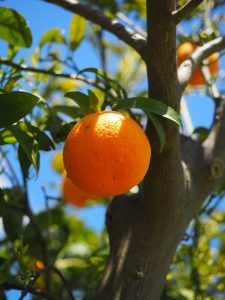 The Mediterranean climate stands out for a wide variability of plant species. These include both those that develop in tropical spaces and in dry climates.
The Mediterranean climate stands out for a wide variability of plant species. These include both those that develop in tropical spaces and in dry climates.
Herbs, bushes, fruit trees, ornamental trees, grasses, etc. can be counted here.
They have the condition of being perennial because there are no sudden changes in temperature throughout the year. That has allowed greater amounts of crops to be produced than in other places.
For example, in Spain the Mediterranean area already has olive groves that help increase the country’s per capita production. A similar case applies to widely consumed products, such as oranges.
What fauna predominates in the Mediterranean climate?
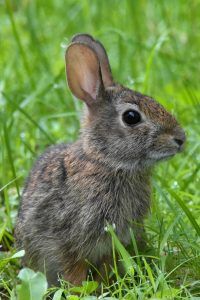 The fauna is also very extensive because a large number of species see this environment as the ideal place to stay and reproduce.
The fauna is also very extensive because a large number of species see this environment as the ideal place to stay and reproduce.
It is a very diverse space with the presence of mammals, amphibians, fish, birds, insects, reptiles and a large number of microorganisms.
We can find rabbits, squirrels, foxes, wolves, hawks, swallows, trout, wild boar, common European viper, partridges, among many others.
Some species are threatened in these areas by the introduction of man in these spaces for the creation of urban planning, exploitation of the land or industrialization.
How long is the day and night in the Mediterranean climate?
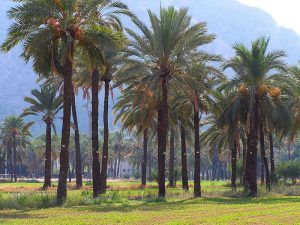 Due to the location of the Mediterranean climate, there are usually variations in relation to the number of hours of light during a day.
Due to the location of the Mediterranean climate, there are usually variations in relation to the number of hours of light during a day.
These are manifested with a period in which the nights are longer than the day, corresponding to the winter stage.
On the contrary, in summer the days are usually longer and the nights shorter.The correspondence in the variation can be up to 15 hours the longest cycle and 7 hours the shortest.
That is, the longest night in winter can reach 15 hours, while the day lasts 7 hours. Similar case but reversed during the summer.
This variability is progressive and does not become as strong as it occurs towards the poles, where the night can last up to 6 months.
Can human beings live in the Mediterranean climate?
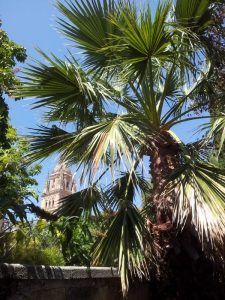 The Mediterranean climate has conditions that are perfect for human life, since there are no significant temperature variations throughout the year.
The Mediterranean climate has conditions that are perfect for human life, since there are no significant temperature variations throughout the year.
This is also a condition that greatly facilitates the work of planting and harvesting products, as well as raising farm animals.
These characteristics make it much more attractive for the life of the human being who will always be in search of spaces that offer the best options.
In fact, in some spaces with a Mediterranean climate there has been a wide and rapid evolution in urban planning issues, which has clearly modified the natural spaces that existed at some point.
The Mediterranean climate is one of the mildest in terms of thermal variability, which allows a rich and wide biodiversity. Although it occupies little land space, compared to other climates, its conditions have allowed it to carve out a niche within the classification system.
Do you live somewhere with a Mediterranean climate? If so, tell us your impressions about this weather.
How hot is the Mediterranean climate?

Common crops in the Mediterranean climate
- Capparis spinosa (Caper, Capers, Alcaparrones, Alcaparro, Alcaparrera, Alcaparrón, Alcaparronero, Caparro, Devil’s Bean, Tapenera, Cabriola, Palo del Diablo) Caper.
- Prunus armeniaca (Apricot, Apricots, Apricot, Damascus, Damasquillo) Apricot.
- Ceratonia siliqua (Algarroba, Algarrobas, Algarrobo, Algarrobos, Garrofera, Garrofo, Garrofero, Algarrobera) Carob trees.
- Prunus amygdalus (Almond, Almond, Almonds, Almond) Almond.
- Ziziphus jujuba (Jujube, Jujubes, Jujube, Jujubes, Jinjolero, Azofaifo, Azofeifa) Jujube.
- Castanea sativa (Chestnut, Chestnut, Chestnuts) Chestnut.
- Punica granatum (Pomegranate, Pomegranates, Pomegranate, Pomegranates) Pomegranate.
- Ficus carica ( Fig tree, Fig trees, Fig, Figs, Breva, Brevas) Fig tree, Fig, Brevas.
- Actinidia chinensis (Kiwi, Kiwis, Chinese Gooseberry, Chinese Gooseberry) Kiwi.
- Passiflora edulis ( Passion Fruit, Granadilla, Granadillas, Pasionaria, Passion Fruit, Passion Fruit, Passion Fruit) Passion Fruit, Granadilla.
- Carya illinoinensis (American Walnut, American Hickory, Pecan Nuts, Pecan, Pecan, Pecan, Pecadero, Illinois Hickory, Pecan Hickory, Pecan Hickory, Illinois Walnut, Pecan) American Walnut.
- Olea europaea (Olive Tree, Olive Trees, Olive Grove, Olive, Olives, Olive, Olives) Olive Tree.
- Pinus pinea (Piñones, Piñón, Stone Pines) Pine nuts.
- Pistacia vera (Pistachio, Pistachio, Pistachio, Alfoncigo, Alfonsigo, Alhócigo, Pistachio Tree) Pistachio.
- Celtis australis (Hackers, Hackberry, Hackberry, Hackberry, Latonero) Hackberries.
- Anacardium occidentale ( Cashew nuts, Cashew nuts, Cashew nuts, Jocote, Marañón, Cashew nuts, Mahogany nuts, Merli, Acacauba, Acajú, Acayoba, Cajuil, Caracolí, Caují, Caujil, Cayutero, Merey) Cashew.
- Cyphomandra betacea ( Tomato Tree, Tree Tomato, Peruvian Tree Tomato, Tamarillo, Tamarillos, Tree Tomato, Tree Tomatoes) tomatoes.
- Quercus ilex (Acorns, Bellota, Encinas) Acorns, Encinas.
- x Citrofortunella mitis (Calamondín, Chinese orange, Calamondia, Naranjita de San José, Naranjita del bishop) Calamondín.
- Diospyros kaki (Khaki, Persimmons, Kaki, Kakis, Lodoñero, Palosanto, Kaquilero) Khaki, Kaki.
- Citrus medica (Citron, Citrons, Citron, Citrons, Grapefruit, Cidrera, Cidrero) Citron, Citron.
- Phoenix dactylifera (Dates, Date Palm) Dates, Date Palm.
- Feijoa sellowiana (Brazilian Guava, Feijoa, Feijoas, Brazilian Guava, Brazilian Guavas) Brazilian Guava, Feijoa.
- Opuntia ficus – indica ( Ficus elastica or Gomero. It is part of the genus of Prickly pears, Higo prickly pear, Tunos, Prickly pear, Nopal, Tuna, Tunera) Ficus elastica or Gomero. It is part of the genus of prickly pears, prickly pear, nopal, prickly pear.
- Fortunella margarita (Kumquat, Kumquats, Kunquat, Cumquat, Dwarf Orange, Dwarf Orange, Japanese Orange) Kumquat.
- Citrus aurantifolia (Lime, Ceuta Lemon, Sweet Lemon, Lime) Lime.
- Citrus limon (Lemon tree, Lemon, Lemons) Lemon tree.
- Macadamia integrifolia (Macadamia, Australian Walnut, Australian Nuts, Australian Hazelnut, Australian Walnut, Macadam, Macadamia Nut, Macadamia Nuts) Macadamia, Australian Nut.
- Citrus reticulata, Citrus deliciosa, Citrus unshiu (Tangerine, Tangerine, Mandarin Orange, Clementine Mandarin, Tangerine) Tangerine.
- Cydonia oblonga (Quince, Quince, Membrillo s, Membrillera) Quince.
- Citrus sinensis (Orange, Oranges, Chinese Oranges, Sweet Orange, Chinese Orange) Orange.
- Citrus aurantium (bitter orange, sour orange, border orange, sour orange) Bitter orange.
- Eriobotrya japonica ( Loquats, Japanese Loquat, Japanese Loquat) Loquats.
- Hylocereus undatus (Pitahaya, Pitahayas, Pitahaya, Pitaya, Tasajo) Pitahaya.
- Musa paradisiaca, Musa cavendishii (Banana, Banana, Bananas, Banana, Bananas, Cambur, Banana) Banana.
- Citrus x paradisi (Grapefruit, Grapefruit, Grapefruits, Grapefruit) Grapefruit, Grapefruit.
- Citrus maxima (Pummelo, Shaddok, Zamboa) Pummelo, Shaddok.
- Citrus reticulata (Tangelo) Tangelo.
Bibliographic references
- The systematization of the Mediterranean climate: identification, classification and climatic characterization of Andalusia (Spain), J Gómez-Zotano, J Alcántara-Manzanares … – Revista de Geografía…, 2015 – scielo.conicyt.cl
- Ecophysiological responses of plants in ecosystems of areas with a Mediterranean climate and high mountain environments, H Cabrera – Chilean journal of natural history, 2002 – scielo.conicyt.cl
- Simple simulation model for estimating growth, phenology and water balance of annual meadows in a Mediterranean climate, G Castellaro, F Squella – Agriculture technique, 2006 – scielo.conicyt.cl
- Impact of fire on some edaphic ecosystems of continental Mediterranean climate in central Spain, JJ Ibáñez, MC Lobo, G Almendros … – Station Bulletin…, 1983 – researchgate.net
- Atlantic vegetation under Mediterranean climate: a case in the Iberian northwest, J Amigo, MI Romero – Phytocoenologia, 1994 – schweizerbart.de
- Temperature and humidity thresholds in the germination of three species of the annual meadow of Mediterranean climate, A Olivares, M Johnston, R Ramírez – Agro-Ciencia (Chile), 1999 – sidalc.net
- Soilless crops: vegetables in a Mediterranean climate, E Martínez Caldevilla, M García Lozano – 1993 – sidalc.net
- https://fichas.infojardin.com/listas-plantas/frutales-climas.htm
Maybe you are also interested in:
- Koppen climate classification: [Concept, Characteristics and Types of Climates]
- Alpine Climate: [Characteristics, Flora, Fauna and Adaptability]
- Arid Climate: [Characteristics, Flora, Fauna and Adaptability]
- Temperate Continental Climate: [Characteristics, Flora, Fauna and Adaptability]
- Continental Climate: [Characteristics, Flora, Fauna and Adaptability]
- High Mountain Climate: [Characteristics, Flora, Fauna and Adaptability]
- Climate of Argentina: [Characteristics, Flora, Fauna and Adaptability]
- Australia Climate: [Characteristics, Flora, Fauna and Adaptability]
- California Climate: [Characteristics, Flora, Fauna and Adaptability]
- Climate of Europe: [Characteristics, Flora, Fauna and Adaptability]
- Tundra Climate: [Characteristics, Flora, Fauna and Adaptability]
- Equatorial Climate: [Characteristics, Flora, Fauna and Adaptability]
- Cold Climate: [Characteristics, Flora, Fauna and Adaptability]
- Cold Weather: [Characteristics, Flora, Fauna and Adaptability]
- Ocean Climate: [Characteristics, Flora, Fauna and Adaptability]
- Polar Climate: [Characteristics, Flora, Fauna and Adaptability]
- Subpolar Climate: [Characteristics, Flora, Fauna and Adaptability]
- Subtropical Climate: [Characteristics, Flora, Fauna and Adaptability]
- Subhumid Temperate Climate: [Characteristics, Flora, Fauna and Adaptability]
- Temperate Climate: [Characteristics, Flora, Fauna and Adaptability]
- Humid Tropical Climate: [Characteristics, Flora, Fauna and Adaptability]
- Dry Tropical Climate: [Characteristics, Flora, Fauna and Adaptability]



